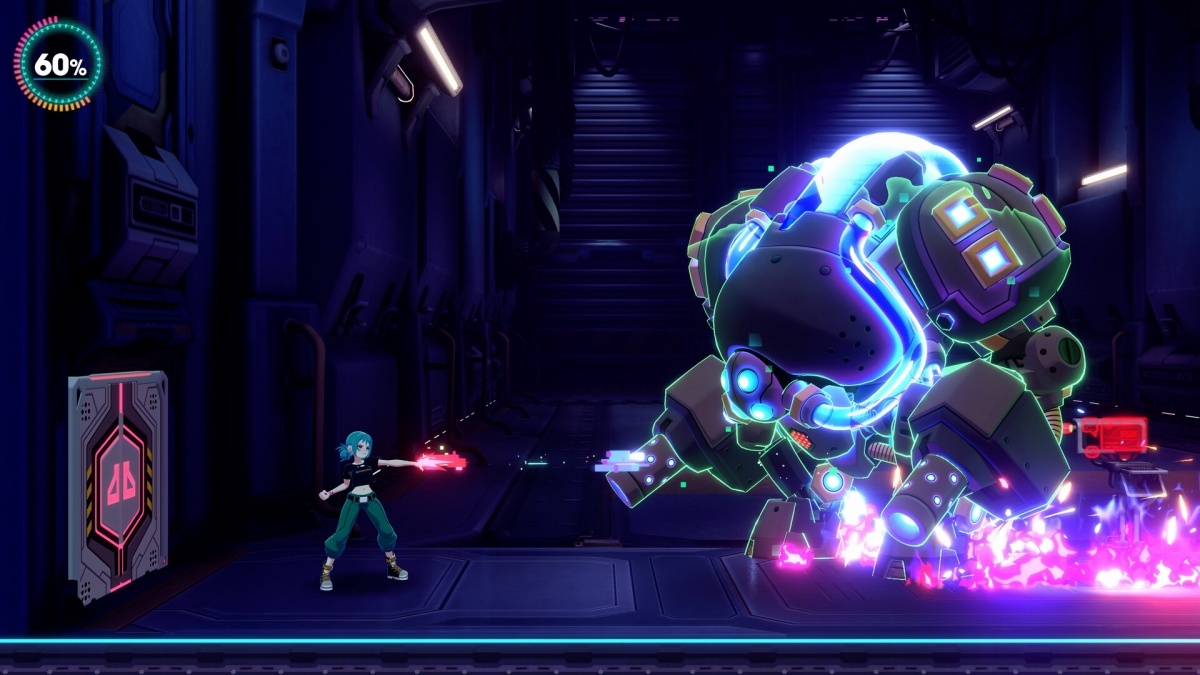Yars Rising (Xbox Series X/S) Review
By Coller Entragian  04.04.2025
04.04.2025

In 1982, Yars' Revenge came out on Atari 2600 and it distinguished itself from other shooters at the time for allowing players to fly all around the screen. The gameplay aimed to emulate the feeling of being a fly and to penetrate enemy shields to hit a target. There was not much to it and when it came time for WayForward to get their hands on the game, they would completely reimagine its entire premise and change the genre. How different is this reimagining?
Yars Rising presents a stark departure from its Atari origins. Set in a dystopian cyberpunk world, the narrative follows Emi, an IT employee at a corrupt corporation. While attempting to undermine the company's nefarious activities, Emi is discovered and fired. Trapped within the building due to a lockdown, she must navigate the skyscraper using stealth and hacking skills.
Emi has a few friends, but the narrative is as clichéd as every cyberpunk-themed story ever written. Yars Rising has the distinction of having WayForward's panache for lame comedy, but it does make up for it with having some cute female characters. Be that as it may, it can feel like the characters are knock-offs of the Shantae cast.
Unlike traditional Metroidvanias, Emi's movement is limited, with a straight-shot ranged attack and slower pace. This design choice may be intended to emphasise the game's focus on hacking, rather than fluid combat. She gains other abilities, but the core mechanics make her feel stiff as she runs, jumps, and crawls through vents. Stealth is as simple as staying out of the line of sight of guards and avoiding lasers.
Yars Rising introduces a cyber-espionage theme, deviating from the typical Metroidvania focus on action and combat. The environment features numerous terminals and access points that players can hack to progress and acquire upgrades. This novel approach provides a refreshing twist on the genre. There is a variety of hacking minigames inspired by Yars' Revenge. These minigames feature simple 4-bit graphics and offer diverse gameplay challenges. While this variety keeps the exploration engaging, it may also occasionally confuse players. They are fast paced and very short.

Progression is largely dependent on hacking minigames, which offer a unique and engaging gameplay experience. These hacking sequences can be challenging, requiring players to understand and execute specific actions quickly within a limited time frame. The object of each hacking sequence varies, and some players are liable to make several accidental mistakes since these minigames can happen very fast and victory conditions will not always be clear. Mistakes can result in Emi losing some health, so failure has legitimate consequences, and getting a game over while hacking is a very real possibility.
The combat and exploration mechanics are relatively straightforward, allowing players to focus on the more complex hacking challenges. In contrast to the intense hacking sequences, the overall pace of the game is generally relaxed, with exploration and avoiding enemies being the primary activities.
Yars Rising's cel-shaded visuals and anime-inspired style are visually appealing; however, the character writing and dialogue try too hard and fall flat. This may lead some players to skip through the dialogue, as the constant quips and forced humour becomes off-putting very fast. Overall, Yars Rising offers a visually engaging experience with a unique spin in an oversaturated genre that may be hindered by the quality of its dialogue.

Cubed3 Rating
Good
Yars Rising offers a unique interpretation of the classic Yars' Revenge. While the narrative may be unmemorable and the cutscenes intrusive, the gameplay remains engaging, thanks to its surprising remixes of the original game and how they fit in the structure of a Metroidvania. The stealth mechanics, though simplistic, contribute to the overall experience.

![]() 6/10
6/10
![]() 0
(0 Votes)
0
(0 Votes)
 Out now
Out now  Out now
Out now  Out now
Out now  Out now
Out now Comments
Comments are currently disabled

 Sign In
Sign In Game Details
Game Details Subscribe to this topic
Subscribe to this topic Features
Features






 Top
Top

